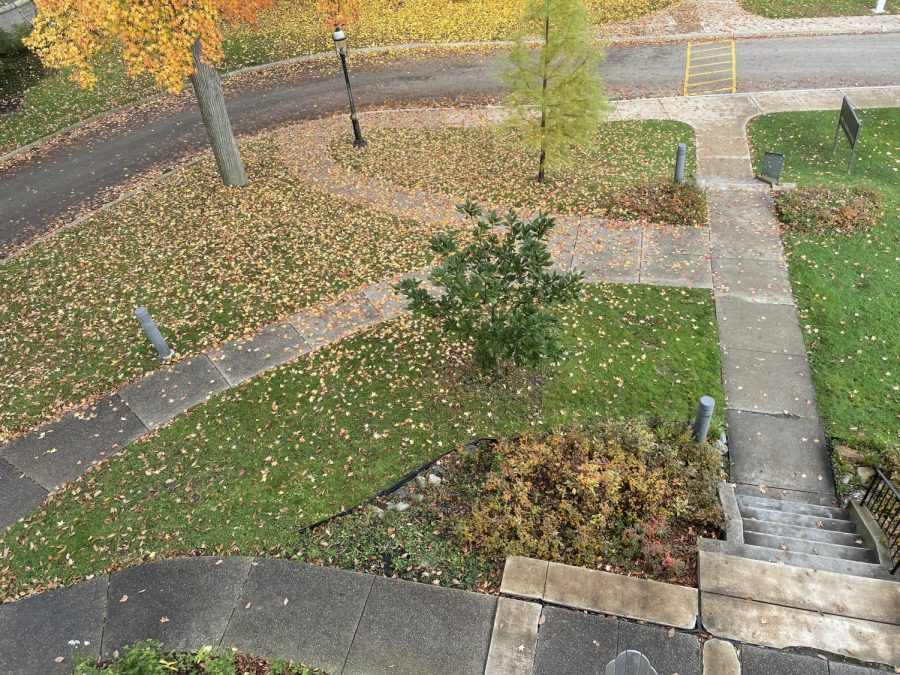Chatham is ADA-compliant but not accessible
November 18, 2022
You may not be surprised to hear that Chatham’s Shadyside Campus is ADA-compliant, but it is not always accessible to many with physical disabilities. It’s common to get winded climbing hills to get to class, but beyond the hilly landscape the infrastructure of many buildings adds to the challenges.
This isn’t the first time these issues have been raised. A lawsuit was brought against Chatham University in 2008 alleging that the school failed to comply with Title III of the Americans with Disabilities Act. Title III prohibits discrimination against disabled individuals in public spaces like schools.
Chatham did make improvements to the Shadyside Campus after the lawsuit, Chatham’s Chief Financial Officer Jennifer Hoerster said. The ramp to Eddy Theatre was built as a result of that lawsuit.
Unfortunately, students with physical disabilities are still facing significant challenges. The easiest to remedy is the lack of signage across campus. Elevators and accessible paths are not clearly marked, and the students I spoke to were not aware that Chatham has a map with accessible routes on the website.

“I feel like a lot of the elevators aren’t very well marked off. Like, I don’t know where most of the elevators are. I think I’ve seen an elevator sign in Anderson [Dining Hall]. I have no idea where it is,” said Hannah Steines-Wolfson ‘26, a student with fibromyalgia and chronic fatigue.
The Art and Design Center (ADC) perfectly illustrates these problems. The elevator broke near the start of the term and was down for several days. Steines-Wolfson said they were not even aware that an elevator was in the ADC.
Another issue is accessible entrances. While most of Chatham’s buildings have accessible entrances, the entrances are not always convenient. The route to get to the ADC if a student is in a wheelchair requires them to get off the sidewalk and cross the road without a crosswalk.
Then, the student must go around the side of the ADC and either take the winding ramp up to the front entrance or go around to the side entrance. Neither door has an accessible automatic door button.
Accessible routes across the campus mirror the often inconvenient and out-of-the-way pathing that the ADC has. Many students take the steps from the Campbell Memorial Chapel parking lot up to the Quad, but the lack of a ramp means students in wheelchairs have to find alternate paths. Theoretically, a ramp could be put in to make it easier, but Hoerster said that cost is a limiting factor.
She said that the administration weighs the needs of students when setting a budget and that students should reach out to the Chatham Student Government or the safety committee because the administration wants to know what students need.
Ramps won’t necessarily solve everything either. Levi Peacock ‘25 was in a wheelchair for his first term at Chatham and said that many of the ramps on campus were too steep to get up without an electric-powered wheelchair.
The biggest issue Chatham faces is not the cost or the topography of the Shadyside Campus. Instead, it’s designing a campus that works for all students. Small details like door handles that are easy to grip make a world of difference for students like Julia Garfinkel ‘26, whose tendinitis weakens her grip strength.
This is a conversation that we as a community need to have. It won’t be simple or quick; it will need to be an ongoing conversation for the rest of Chatham’s existence, but the consequences of not talking about these issues is far too great.
Peacock has POTS, or postural orthostatic tachycardia syndrome, a condition that causes his heart rate to spike to dangerous levels if he overexerts himself. He said accessibility wasn’t something he considered when coming to Chatham, but then his POTS worsened.
“If I knew that my POTS would get worse with time, I don’t think I would have chosen Chatham. … Part of me wonders if my condition has gotten worse because I’m overexerting my body more often than I used to. That is something I think about all the time,” he said.
The fact that students have to worry about the physical toll being at Chatham may have taken on their bodies is a damning indictment of the campus’ accessibility. While Chatham’s hilly terrain may be unfixable, many of the issues these students face are. It’s just a question of if students will continue to speak up and if the administration will take action to protect its student body and its students’ bodies.







